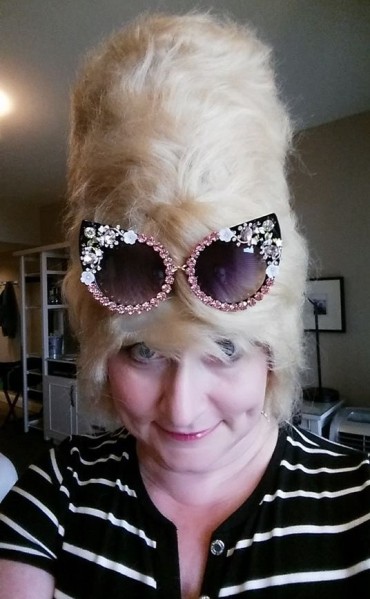
Sometimes I can be a little silly.
Do I know everything there is to know about humor writing? The answer is YES. Yes, I do.
Let me qualify that–I know everything “I” know about funny writing. There. That’s more accurate. And to be even more precise, I know just over a dozen things you might like to learn about writing with humor for children. These are mostly observations. I’m drafting another glistening post with actual tips on humor writing. (I do enjoy pressuring myself.)
So, here you go, my little Pixie Stix:
- Humor is a heart-grabber. Humor can give you a portal to your reader’s heart. When your reader throws back her head and laughs, that’s the author’s opportunity to reach in and snatch that reader’s heart.
- Respect your natural inclinations. If humor happens to be your super power, let it infuse your work in an organic way. Other than professional comedians, nobody leaves the house with a list of gags. You’re not writing “material,” you’re making a story. To be really funny, you need to keep it real.
- Humor can reveal your character’s character. Your character’s sense of what’s funny informs the reader about a character’s character/personality/point of view.
- Humor serves to make serious scenes serious-er. Drama is more dramatic and stress is more intense when it is contrasted with timely little moments of levity.
- Please yourself and your reader first. If your story makes adults laugh too, that’s a bonus. Resist the temptation to include a funny aside or quip solely for the grown-up reader’s benefit. Show some R-E-S-P-E-C-T for the young reader. Yes, Aretha said so.
- Humor lets your reader come up for air and can be used to dissipate tension. That means, the timing of your lighter moments is critical. Otherwise, you can let all the air out of the balloon (that is to say, the rising tension will dissipate).
- Don’t be afraid to use poop. The strategic use of taboo words like poop, booger, fart, snot, barf, belch or any of the other bodily-function-centric funny words is a sure-fire way to tickle your reader.
- Don’t over-do the doo doo. Remember the Poop Principle – even poop can lose its pizzazzle and be drained of its power with overuse. Just a sprinkling of poo will do.
- Sometimes, as in real life, your funniest character can be the one experiencing the most pain. So, your character’s sense of humor provides an opportunity to reveal and contrast your character’s internal conflict with her people-facing side.
- Sarcasm is the wasabi of humor – use sparingly. Sarcastic quips get old and typically distances people. So, if you create a character who wants to push people away, sarcasm is the way to go. But be sure to dig deep to understand your character’s snark attacks. Why does he use sarcasm? What is his back story? Why does he push people away & distance himself? For protection? To feel superior?
- Humor needs to fortify the overall plot (and not just hang out in the wings until it’s time to walk on stage). Otherwise, it’s just a series of Dad jokes—unless you want the Dad to tell jokes in the story “just because.”
- Humorous books meet a basic need. Kids need opportunities to laugh, to giggle, to be delighted and to escape. Your humor can forge an intimate bond with your reader because your stories will be source of happiness. Isn’t that marvelous?
And a half – Oh, I crack me up! There’s nothing like making yourself laugh, except for making your reader laugh.
Life is worth living as long as there’s a laugh in it. ~ Anne of Green Gables
Love your Dolly Parton hairstyle.
LikeLike
I had such fun in that wig and seeing people’s reactions. I felt like a new me!
LikeLike
Love it! Thanks for sharing your tools, Vicky! ❤
LikeLike
Hey! Thank you for dropping by. Write on.
LikeLike
I love this post. Oh for the love of humor. You rock.
LikeLike
Hey, thank you, Angela! (Did this post feel like deja vu?)
LikeLike
Awesome, as always, Vicky.
LikeLike
You’re such a great encourager. Thank you, Ann!
LikeLike
You nailed it. ::applauding::
Also, that’s the best wig ever, and those glasses are perfect for it.
LikeLike
Why, thank you, Ruth! I tip my wig to you!
LikeLike